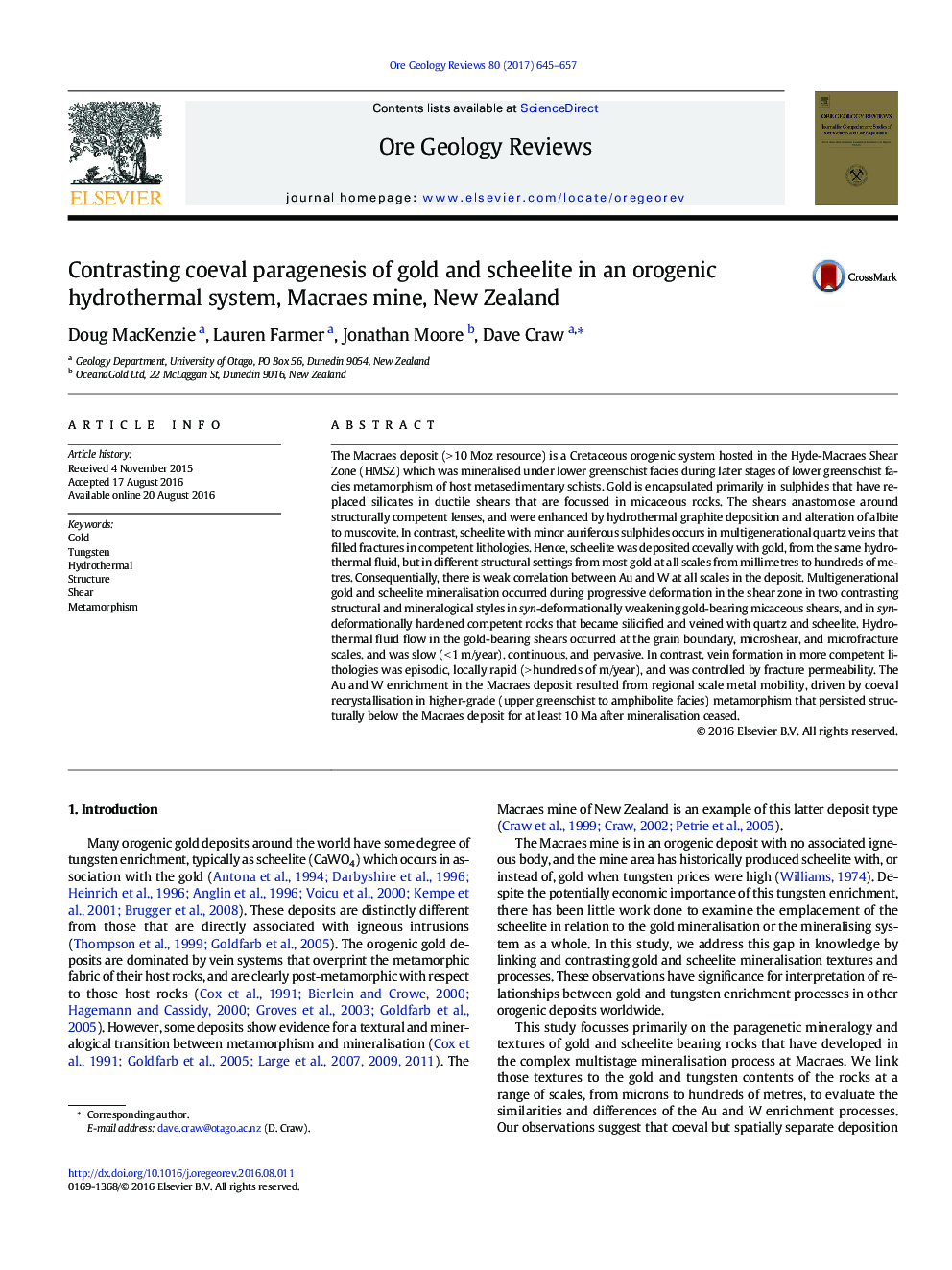| Article ID | Journal | Published Year | Pages | File Type |
|---|---|---|---|---|
| 6435646 | Ore Geology Reviews | 2017 | 13 Pages |
â¢Gold and tungsten mineralisation occurred under late metamorphic ductile conditions.â¢On all scales (mm to hundreds of m), Au and W are weakly correlated because of differing mineralisation processes.â¢Most gold was emplaced via sulphide replacement of silicates in continuous ductile micaceous graphitic shears.â¢Scheelite occurs with quartz in veins infilling discontinuous brittle fractures.â¢Mineralisation resulted from shear-controlled migration of metamorphogenic fluid with Au and W from higher grade rocks.
The Macraes deposit (>Â 10 Moz resource) is a Cretaceous orogenic system hosted in the Hyde-Macraes Shear Zone (HMSZ) which was mineralised under lower greenschist facies during later stages of lower greenschist facies metamorphism of host metasedimentary schists. Gold is encapsulated primarily in sulphides that have replaced silicates in ductile shears that are focussed in micaceous rocks. The shears anastomose around structurally competent lenses, and were enhanced by hydrothermal graphite deposition and alteration of albite to muscovite. In contrast, scheelite with minor auriferous sulphides occurs in multigenerational quartz veins that filled fractures in competent lithologies. Hence, scheelite was deposited coevally with gold, from the same hydrothermal fluid, but in different structural settings from most gold at all scales from millimetres to hundreds of metres. Consequentially, there is weak correlation between Au and W at all scales in the deposit. Multigenerational gold and scheelite mineralisation occurred during progressive deformation in the shear zone in two contrasting structural and mineralogical styles in syn-deformationally weakening gold-bearing micaceous shears, and in syn-deformationally hardened competent rocks that became silicified and veined with quartz and scheelite. Hydrothermal fluid flow in the gold-bearing shears occurred at the grain boundary, microshear, and microfracture scales, and was slow (<Â 1Â m/year), continuous, and pervasive. In contrast, vein formation in more competent lithologies was episodic, locally rapid (>Â hundreds of m/year), and was controlled by fracture permeability. The Au and W enrichment in the Macraes deposit resulted from regional scale metal mobility, driven by coeval recrystallisation in higher-grade (upper greenschist to amphibolite facies) metamorphism that persisted structurally below the Macraes deposit for at least 10Â Ma after mineralisation ceased.
Graphical abstractDownload full-size image
